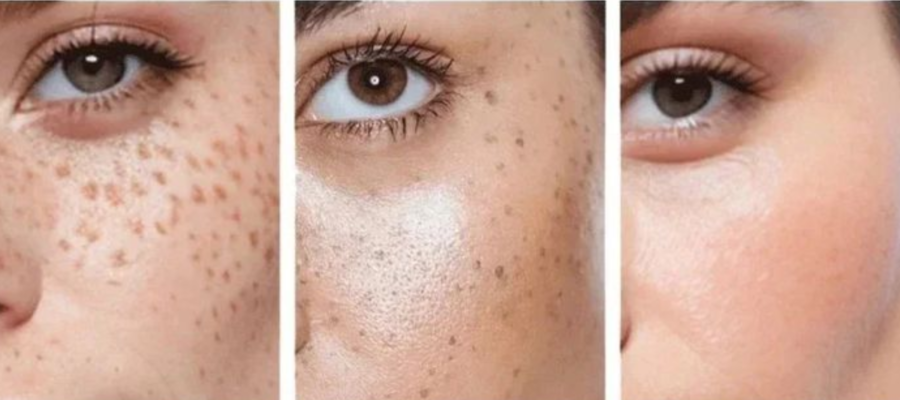
Freckles are small, flat spots that appear on the skin, typically in areas exposed to the sun, such as the face, shoulders, and arms. They are caused by an increase in melanin production, which can be triggered by sun exposure or genetic factors. While some people embrace their freckles as a natural part of their appearance, others seek treatment to reduce their visibility.
Types of Freckles
Freckles can be classified into two main types:
- Ephelides: These are the most common type of freckles, typically light brown or tan in color. They usually appear in childhood or adolescence and tend to darken in the summer months when exposed to sunlight.
- Lentigines: Often referred to as age spots or sun spots, lentigines are larger, darker spots that can develop due to prolonged sun exposure over the years. They are more common in adults and may vary in size and color.
Causes of Freckles
- Sun Exposure: The most common cause of freckles is exposure to ultraviolet (UV) rays from the sun. UV rays stimulate the production of melanin, leading to the development of freckles.
- Genetics: Some individuals are genetically predisposed to freckles. If your parents or grandparents have freckles, you may be more likely to develop them.
- Skin Type: People with fair skin are often more prone to developing freckles due to lower levels of melanin in their skin.
Freckle Removal Options
1. Laser Treatments
Laser treatment is one of the most effective methods for freckle removal. This technique uses focused laser energy to target and break down the excess melanin in the freckles. As the laser penetrates the skin, it disrupts the pigmented areas, allowing the body to naturally eliminate the broken-down melanin.
How it Works:
- A consultation is conducted to assess your skin and determine the best laser type for your freckles.
- The skin is cleansed and prepared for treatment.
- Protective eyewear is provided, and the laser is applied to the affected areas.
- The procedure typically lasts 15 to 30 minutes, depending on the size of the treatment area.
2. Topical Solutions
For those seeking a less invasive option, topical solutions can effectively lighten freckles over time. Ingredients like hydroquinone, glycolic acid, and vitamin C are commonly used to reduce pigmentation.
How it Works:
- A consultation will determine the appropriate product based on your skin type and freckles.
- Topical treatments are applied daily as part of your skincare routine.
- Consistent use can lead to gradual lightening of freckles.
3. Chemical Peels
Chemical peels can also be an effective method for reducing freckles. This treatment involves applying a chemical solution to the skin to exfoliate the outer layer, promoting cell turnover and revealing fresher, more evenly toned skin beneath.
How it Works:
- A consultation is conducted to determine the best type of chemical peel for your skin.
- The peel is applied to the treatment area, allowing it to penetrate the skin.
- Over time, the outer layer of skin peels away, helping to reduce the appearance of freckles.
Freckles are small, flat, brownish spots on the skin that often appear on sun-exposed areas. Understanding the causes, types, and treatment options for freckles can empower individuals to make informed choices about their skin. Whether embracing them as a unique feature or seeking treatment for a more even complexion, there are various avenues to explore based on personal preferences and skin types. Always consult with a dermatologist to find the most suitable solution for your skin concerns.
Frequently Asked Questions For Carbon Laser Peel Treatment in Mira Bhayandar
Freckle removal treatments, like laser therapy or chemical peels, target dark spots on the skin to reduce their appearance and give you smoother, more even skin.
Yes, it is generally safe when performed by a professional, but risks like irritation or pigmentation changes can occur, so a consultation with a dermatologist is recommended.
Laser treatments can show results in 1-2 weeks, while creams or chemical peels may take a few weeks or months for noticeable changes.
The results can be long-lasting, but freckles may return if you’re exposed to the sun without sunscreen. Regular protection can help maintain your clear skin.
Common side effects include redness or mild peeling, but more serious side effects are rare when following proper aftercare instructions.
